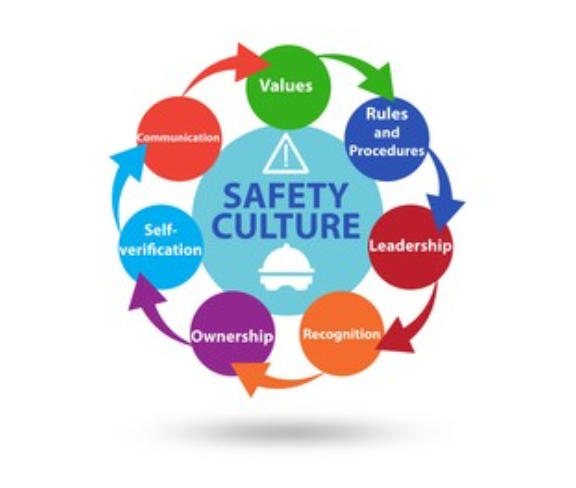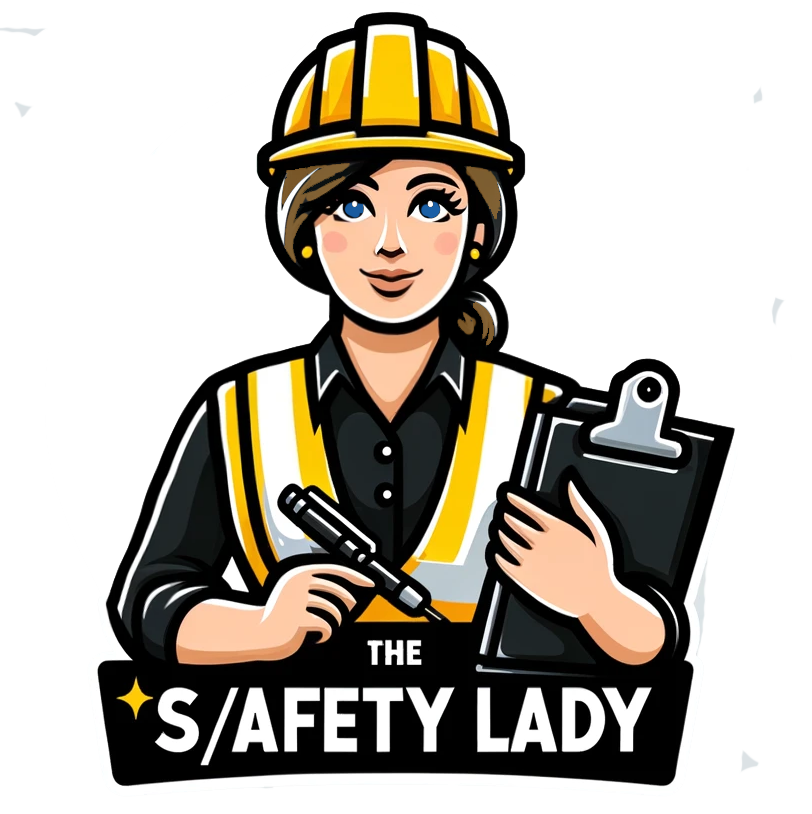Your cart is currently empty!

In today’s fast-paced work environments, the importance of a robust safety culture cannot be overstated. Safety culture serves as the bedrock of a thriving organization, ensuring the well-being of employees while fostering productivity and operational excellence. It’s a multidimensional concept, encompassing a range of practices, beliefs, and values that collectively contribute to the safety and security of the workplace.
The infographic illustrates the core elements necessary for cultivating a strong safety culture: Values, Rules and Procedures, Leadership, Recognition, Ownership, Self-verification, Communication, and the central tenet of Safety Culture itself. Here, we delve into each aspect, highlighting how they contribute to a cohesive and effective safety ecosystem.
Values
The foundation of a safety culture is built on values that prioritize the health and safety of all stakeholders. These values should be clearly defined, communicated, and integrated into all organizational activities. They guide decision-making processes and set the standard for expected behaviors within the workplace.
Rules and Procedures
Establishing clear, concise, and accessible rules and procedures is essential for maintaining a safe working environment. These guidelines provide a framework for daily operations, ensuring that safety practices are consistently applied. Regularly reviewing and updating these procedures ensures they remain relevant and effective in managing emerging risks.
Leadership
Leadership is the driving force behind a successful safety culture. Leaders at all levels must demonstrate a commitment to safety, setting the tone for the entire organization. By leading by example, leaders can inspire and motivate employees to adhere to safety protocols and actively contribute to a safer workplace.
Recognition
Acknowledging and rewarding safe behaviors reinforces the importance of safety and encourages a continuous commitment to upheld standards. Recognition can take many forms, from formal awards to informal acknowledgments, but the key is to make it consistent and meaningful.
Ownership
Ownership empowers employees to take personal responsibility for their safety and the safety of others. When individuals feel accountable, they are more likely to adhere to safety protocols and take proactive steps to mitigate risks. Encouraging ownership involves providing the necessary training, resources, and support to enable employees to make informed safety decisions.
Self-verification
Self-verification is the process of regularly checking and assessing safety practices and environments to ensure compliance and effectiveness. This can include audits, inspections, and feedback mechanisms. Empowering employees to participate in this process fosters a sense of responsibility and engagement.
Communication
Open and effective communication is the lifeblood of a safety culture. It ensures that all employees are informed about safety issues, updates, and changes. Communication should be two-way, providing channels for employees to voice concerns, report hazards, and offer suggestions for improvement.
Safety Culture
At the heart of these elements is the overarching concept of Safety Culture. It represents the collective commitment to safety at all levels of the organization. A strong safety culture is characterized by a shared belief that safety is paramount and non-negotiable. It influences every action, every decision, and every interaction within the organization.
Creating a safety culture is not a one-time effort but a continuous journey. It requires dedication, collaboration, and an unwavering commitment to safety from everyone in the organization. By focusing on these key elements—Values, Rules and Procedures, Leadership, Recognition, Ownership, Self-verification, and Communication—businesses can develop a safety culture that not only protects its employees but also enhances overall organizational performance. Safety is not just a policy; it’s a mindset that permeates every aspect of work life, fostering an environment where everyone can thrive.
